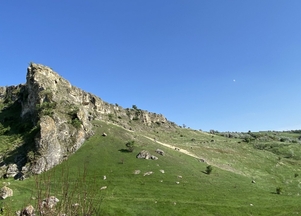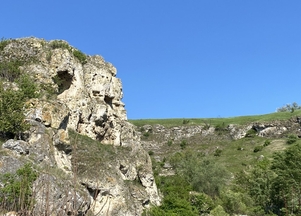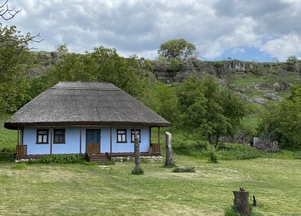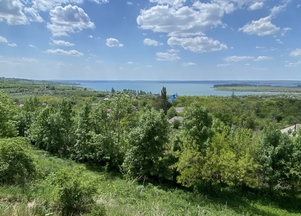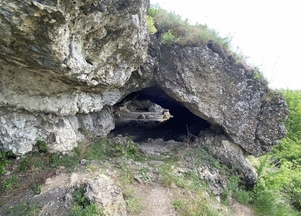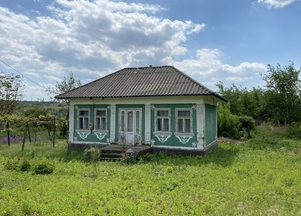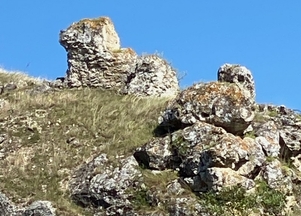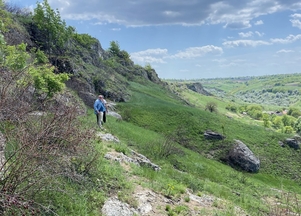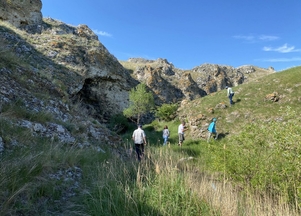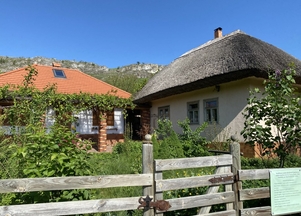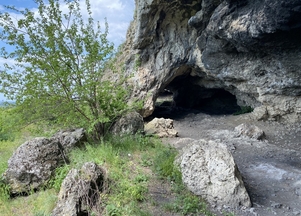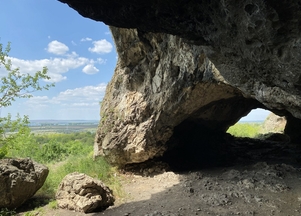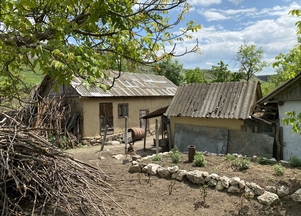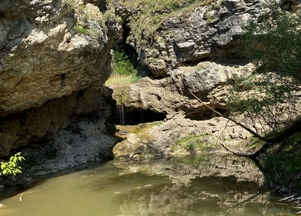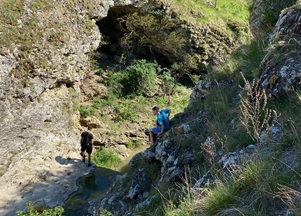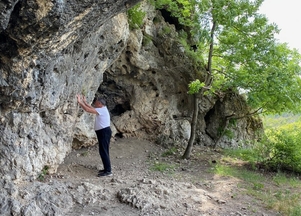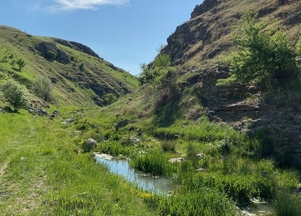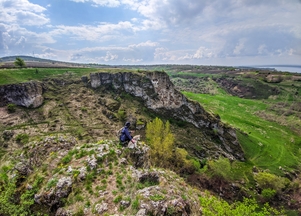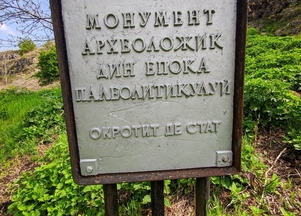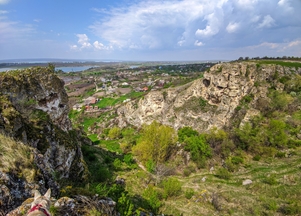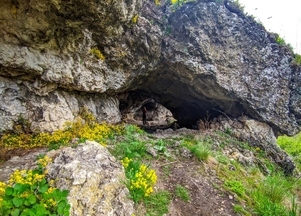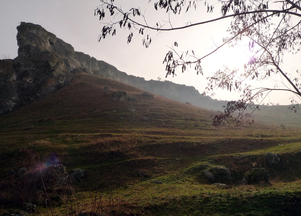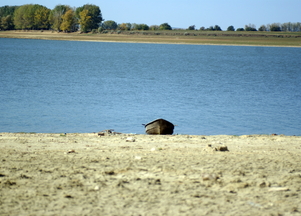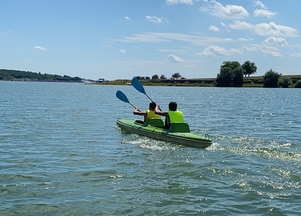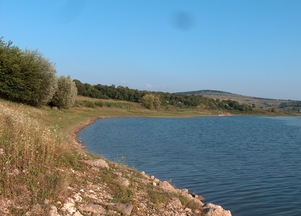Duruitoarea Veche
History
Duruitoarea Veche is a beautiful village, located in a picturesque place, a relief of hills and plains, surrounded by ancient cliffs and the Costești Stânca reservoir. The name, according to several scholars, including Anatol Eremia, reproduces the eutopic term duruitoare, formed with the suffix -(i)toare from the verb - a durui- to make noise. This is how the valley and the stream with rocky ravines near the village were originally called. In our language the adjective duruitoare is known as a narrow place in the bed of a stream, where the fast flowing water makes noise, a threshold in the bed of a flowing water, a waterfall. The locals called this stream Duruita, because the water flows through the rocks and makes noise. Legends say that the name of the village also comes from the Duruita stream which for many centuries flowed into the Ciuhur river, a tributary of the Prut. The Costești- Stânca dam built in the 1970s altered the natural landscape of the Prut valley for several villages, including Duruitoarea Veche. The Ciuhur River has forever flowed into the waters of the Prut. The locals, but also many of those who visit this corner of nature are delighted by what they see, and discover, thus putting down on paper many beautiful thoughts. This is how many legends about the village of Duruitoarea have been born. The oldest one that has circulated from generation to generation is the one known to the young and old. It is said that long ago upon the cliff was a chain of springs and ponds. Lo and behold, a bolder trickle of water made its way to the top of the cliff. Here it continued its way among the larger, smaller stones until a stream formed, which in time grew into a small river. The water, in its flow, crept between the stones at a distance, some higher, some lower, and so, as it flowed, it made a noise. The locals called the stream Duruita, and it is thought that this name also gave rise to the name of the village Duruitoarea.
Near Duruitoarea Veche, on the eastern side, in the row of limestone cliffs at a height of 33 metres from the village level, there is an archaeological monument of unique value - a cave that is over 300 thousand years old, considered the oldest in our area. For millennia, the cave has served the natives as shelter, shield and defence. When hordes of Huns, Tatars and Ottomans came up the Prut, the locals retreated to the cave and prepared their weapons (stones, spears, axes). When the looting and wars subsided, the natives came down to the mouth of the Ciuhur and settled down to live, forming a village of rare beauty. The locality was documented only in 1755, when a Polish ambassador stopped here on his way to Constantinople.
In 1772 Duruitoarea appeared on the map of the Russian general Baner. In 1817 Duruitoarea had 26 courtyards, and in 1830 it had 38 peasant houses and 2 courtyards of the mazils (boyars of the landed gentry in Wallachia and Moldova). In 1835 the estate of Duruitoarea village passed into the possession of the Păscăuți Monastery, Botoșani county. Three families in the village had Austrian citizenship, the number of peasant courts amounted to 50. Ioan Cuzmiță, a landlord, had large lands in the valley of the Duruita stream and over Ciuhur. In the list of settlements in the Russian Empire, drawn up in 1859 and published in St Petersburg in 1861, Duruitoarea on Ciuhur is listed as a monastery village with 64 houses (140 men and 151 women). It was under the protection of the village of Zabriceni. Later part of the estate of Duruitoarea village, 1,053 ares of land, passed into the possession of the Patriarchate, the rest was taken by the Russian Ministry of State Property and leased for 6 years to the landlord D. Flendor for 4,000 silver rubles per year.
The writer Zamfir Arbore gives the following description of this ancestral home: "Duruitoarea, a village in Balti county, located in the Hîrleca valley, between Prut and the village of Mălăiești. It is part of the Zăbriceni district. It has 85 Romanian peasant houses. It is the property of the Păscăuți Monastery, which owns 1,038 ares here, and the peasants have 675 ares of land to be owned. The village has a church dedicated to St. Michael, a school with one class where only Russian is taught, although the peasants do not speak this language" (Geographical Dictionary of Bessarabia. Bucharest. 1904).
In Duruitoarea, two centuries-old buildings have survived. One hosted the primary school for many decades. From the documents of the time we learn that in 1864 in Bessarabia one-year and two-year village schools were established for the education of rural children. In addition to state schools, private schools also appeared. In 1892 in Duruitoarea Veche there was a parish school of one class. Its owner was the nobleman Gheorghe Precup. The Patriarchate invested 720 rubles annually for the school's proper functioning. On 1 December 1901 Gavril Hagacevschi from the village of Danu was appointed as a teacher here. At the end of the 19th century and the beginning of the 20th century, trade schools were opened, where pupils studied the professions of carpenter, lathe operator, blacksmith. Agricultural schools were also opened. In 1912, four-year primary schools were opened instead of town schools. Many of these schools continued to operate between 1918 and 1940. In 1933 a primary school was operating in Duruitoarea Veche. The teachers here were Gheorghe Săul, Eleonora and Eudochia Buzdugan. The school was attended by 90 children out of more than 130 of school age. Among the first teachers at the primary school in Duruitoarea until 1940 was Vasile Chetraru. His family was respected by the whole village. The greatest joy of this teacher and school principal was when he could help people.
In 1940 he fled with his family across the Prut, but the longing for his homeland has always been in his heart. He visited Duruitoarea several times in 1952, 1958, 1980 and went to the Bridge of Flowers. He came with his children Viorica and his son Dumitru and showed them the village of his grandparents, great-grandparents, then he came with his granddaughters Monica and Cristina. Monica settled in the USA and Cristina in Iași. Both have embraced the noble profession of medical doctor. Older locals often remembered Chetraru's spring. In fact, in Duruitoarea Veche, several springs were dug in the past, and their names completed the micro toponymy of the village. The inhabitants, good people, as a sign of respect, appreciation for the former teacher Vasile Chetraru, for many years took care of this spring, which his grandfather made.
A long, successful activity was carried out by two teachers who have remained in the memory of many generations of Duruitoarea children. Vasile Mereuță, headmaster and teacher Efim Gherman (Haim Ițcovici). The school building dates back to the 19th century. The thick walls, the solid oak floor, the large doors, the high bridge... Everything is just as it was. Over the years the number of children was always decreasing, which led to the closure of the primary school. Nowadays the children of Duruitoarea study at the "Silvian Lucaci" Theoretical High School in the town of Costești, a modern high school equipped with modern technologies and highly qualified teachers. The building of the former primary school for many years hosted the town hall, the post office, the library, but its true value was regained with the inauguration of the village museum, and later of the tourist complex, which has become a captivating and cognitive stop for those who come to visit these places. The locals are happy to hear the voices of the children, who attend a glass painting circle, taught by the folk painter Sergiu Briceag.
Another building - the calling card of Duruitoarea Veche village is the church. In the Encyclopedic Dictionary Volume III "Churches of Bessarabia", Chisinau 2018 we find important data about the church of the village of Duruitoarea Veche with the dedication "Saints Archangels Michael and Gabriel". It was built by the villagers in 1806. It was made of wood, bound with clay and covered with straw. The stone church was built on the site of the old one in 1848 with the diligence of the priest Teodor Constantin Onufrievici and the parishioners. The construction is shaped like a cross. It was consecrated on 8 November 1848. From other sources we also learn that the church in the village of Duruitoarea was built from the money of the Păpăuți Monastery. It has a traditional partitioning: porch, pro-nave, nave and altar. The square bell tower with a pyramidal roof is above the pro-nave. The cubic nave has a gabled roof and an octagonal drum with a bulbous dome above it.
Capital repairs were carried out in 1868, 1901, 1921 and 1941.
During the Soviet period the church was closed from 1962 to 1989. In the early 1990s a major repair was carried out. Even though it did not function, many icons and old church objects were preserved. Among the objects of worship, the oak iconostasis, bought by the parishioners and installed in 1921 and two old icons "Virgin Mary" (1935) and "St. Michael the Archangel" (1937) are worth mentioning. Over the years many priests have passed through the village, who have remained in the history of the village. The longest activity was of Gheorghe Benea, parish priest of the church "St. Archangels Michael and Gabriel" (1940-1941; 1944-1962). Gheorghe Ioan Benea was born in 1909 in the village of Văratic, Râșcani district. In 1922-1931 he studied at the Theological Seminary in Edinet, and in 1931-1936 - at the University of Chernivtsi, theology faculty. Previous parishes: 1936-1940 - Nicolaevca, Balti county, 1940-1941 - Duruitoarea, Balti county, 1941-1943 - Nicolaevca, Sangerei district, 1943-1944 - Mălăești, Balti county. In 1944 he returned to Duruitoarea, where he was parish priest of the church until 1962, when the church was closed. He died in 1973.
Gheorghe Ioan Benea was born in 1909 in the village of Văratic, Râșcani district. In 1922-1931 he studied at the Theological Seminary in Edinet, and in 1931-1936 - at the University of Chernivtsi, Faculty of Theology. Previous parishes: 1936-1940 - Nicolaevca, Balti county, 1940-1941 - Duruitoarea, Balti county, 1941-1943 - Nicolaevca, Sangerei district, 1943-1944 - Mălăești, Balti county. In 1944 he returned to Duruitoarea, where he was parish priest of the church until 1962, when the church was closed. He died in 1973. Father Gheorghe Benea remained in the memory of the village also for the deed he committed in the summer of 1941, when together with his wife Liuba, the priestess, they saved 26 Jews from death in the village of Duruitoarea. The reprisals caused by that tragic event, known in history as the Holocaust, brought these innocent people to the village of Văratic, where they were about to be executed, but priest Benea and his wife, priestess Liuba, learning about the sad event, saved them. In gratitude for this deed, one of the descendants of those saved, Efim Roif, collaborated with the local authorities and a monument to the memory of the priest Gheorghe Benea was erected in the courtyard of the "St. Nicholas" church in Văratic. Also from Shabs Roif's son, one of the Holocaust survivors, who until 2012 was the President of the Association of Ghetto and Concentration Camp Survivors in the Republic of Moldova, we learned that through Shabs Roif's efforts, Yad Vashem in Jerusalem awarded the title of "Righteous Among Peoples" (post mortem) to priest Gheorghe Benea and Liuba Benea on November 22, 2003.
Legend
Duruitoarea
It is said that thousands of years ago these places were a land of grasslands and meadows, where animals - wild boar, rhinoceros, deer, wild boar, herds of horses, etc. - roamed freely. The only occupation of the tribes of people who lived here was hunting. Since they had plenty of food, they felt safe and secure. But after a while, food resources became scarce and the people became angry, aggressive and often deadly clashes took place between these tribes. That's why they began to build defensive walls out of stone and forest logs, and made their paths to the village through mountain ranges with sharp peaks, labyrinths, steep banks and deep crevices. They also had watchtowers, built in caves or on cliffs, where day and night the watchmen kept the tribe safe and quiet.
Just at that time, two young people from tribes hostile to each other, somehow met and fell in love with each other. The girl was called Duruita and the boy - Cihur. She was gentle and playful like a baby deer, with blue eyes like the spring sky, always smiling, had such laughter that birds would stop flying to listen to her. With joy in her heart, she was always cheerful and gentle. He was calm and sober, tall and strong, was not too talkative, and, looking at her with great passion, loved to listen to her voice.
Sneaking out of their villages, coming along paths unknown to anyone, they met on the Tâglău, a peak, or, as it is also called, the head of the mountain, where, if you look up, the whole universe opens up. Here, in the tall, cool grass of the night, they watched the deep sky and the stars dance, and in the morning, waiting for the next night, they would slip back to their villages. But once the young lovers fell asleep and, in the dawn's light, they were spotted and caught by the guards. Chained together, they were doomed to be separated forever.
Cihur was taken far away, towards the Northern Star, to the open field and pinned to the ground, where, without food and water, burned by the sun, beaten by the winds and rains, he became prey to the crows. But he felt no such pain. The thought of never seeing his beloved again burned his soul. Men don't cry. Only a tear of deep sadness fell to the ground and a stream sprang up in that place. Thinking only of his beloved, the brook meandered farther and farther, skirting obstacles and crushing the mountain range. Bent on reaching Țâglau, it grew deeper and stronger.
Duruita was hidden not far from the village, in a place away from prying eyes. For days Duruita cried until her tears, clean and serene, formed a stream, cracked the stone, forming a gorge, and also heading for Tâglău. If you listen carefully and quietly, at the bottom of the gorge you can hear Duruita's whispers "cihur - cihur - cihur".
And to this day, Cihur and Duruita meet at the foot of their beloved Tâglău, where the stars and moon descend close to the earth to light their way.
And to this day, on summer nights, those who carry true Love in their hearts,can hear Durita's whispers on Tâglău and see, on the surface of the water, the light in the sad but happy eyes of Cihur.
Beautiful places
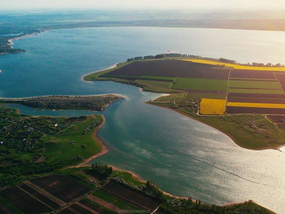
The Costești-Stânca reservoir
The Costești-Stânca reservoir is a lake with an area of 59 square km, located on the Prut river at the border between the Republic of Moldova and Romania .
Read more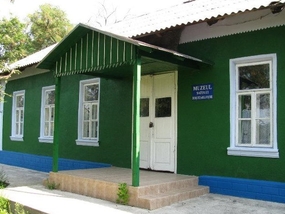
Muzeum Duruitoarea Veche
During 2016-2017, through a project developed by AO Moștenitorii (Bălți) and supported by the CHOICE/EU program, the Duruitoarea Veche museum complex was created, which includes the museum, the "Grota" archaeological monument and the "Duriitorea Gorge" nature reserve
Read more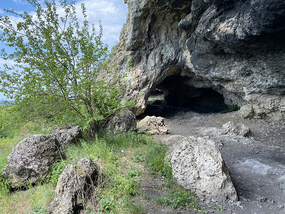
The Grotto of Duruitoarea Veche
At the junction of the Ciuhur and Prut rivers, the pulse of life has been beating since the Lower Palaeolithic, when people used tools made of hewn stone. Here is the earliest monument of human history on the territory of the Republic of Moldova - Duruitoarea Veche.
Read more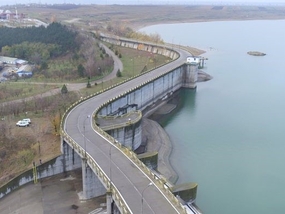
Costesti-Stinca Dam
The Costesti-Stânca hydrotechnical node on the Prut river is one of the most beautiful, but also the most useful hydrotechnical constructions in Romania. The dam impresses not only in Moldova, but also in Europe, being the third in Europe in terms of water retention capacity and the extent of the reservoir.
Read more.jpg)
Duruitoarea gorge
The Duruitoarea gorge is a geological or paleontological monument of nature. It is located in the eastern part of the village, on the left bank of the Ciuhur River, a tributary of the Prut. It covers an area of 6.63 ha.
Read moreFigures
Vasile Tomuz, orthopaedic-traumatologist, Head of the "Emilian Cotaga" Clinic, Mother and Child Institute. In 2020 he was awarded the Order of Labour Glory.
Vasile Moraru, Associate Professor, PhD, Technical University of Moldova.
Victoria Tomuz, teacher and journalist, deputy editor-in-chief of the editorial staff of radio broadcasts for children and youth of the State Company "Teleradio-Moldova", awarded with the medal "Civic Merit".
Alexandru Pelin, born in 1958, graduated from the State University of Moldova, Faculty of Law (1985), member of the Supervisory Board of the National Bank of Moldova.
Claudiu Mereuță, university lecturer, University of " Dunarea de Jos" Galati .
Video presentation
In the following video presentation, you will be invited to discover the beauty of the banks of the Prut River in the Republic of Moldova. This picturesque area is known for its idyllic landscapes, where the river Prut flows quietly through the hills
photos by Iurie Sveț – www.hikeme.club
Useful Links
https://www.moldova.org/turist-in-moldova-duruitoarea-veche-rascani
https://ro.wikipedia.org/wiki/Duruitoarea,_R%C3%AE%C8%99cani
https://localitati.casata.md/index.php?action=viewlocalitate&id=7162


 ro
ro
 ru
ru

